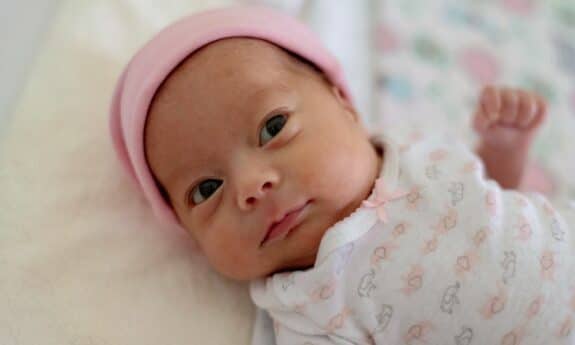Retinopathy of prematurity (ROP) is a concerning eye condition that can affect babies born prematurely, particularly those weighing less than 3 pounds at birth. The condition arises due to disruptions in the normal development of retinal blood vessels during pregnancy. Normally, these vessels begin to develop around the fourth month of gestation and complete their formation around the due date, or approximately 9 months of pregnancy. However, when infants are born prematurely, these vessels may fail to develop properly, leading to the growth of abnormal blood vessels in the retina. This abnormal growth, known as retinal neovascularization, can ultimately result in retinal detachment, a severe complication associated with ROP.
Stages of ROP
ROP progresses through five stages, which doctors use to assess its severity:
- Stages 1 and 2: Babies in these stages often improve without treatment, and their vision remains healthy. Close monitoring is essential to track any worsening of the condition.
- Stage 3: While some infants with stage 3 ROP may recover without intervention, others may require treatment to prevent damage to the retina and potential vision loss.
- Stage 4: At this stage, the retina is partially detached, necessitating treatment.
- Stage 5: The most severe stage involves complete retinal detachment. Even with treatment, vision loss or blindness may occur.
Given the seriousness of stages 4 and 5, doctors typically initiate treatment at stage 3 to mitigate the risk of further complications.
Symptoms of ROP
Notably, ROP doesn’t present visible symptoms in its early stages. However, advanced cases may lead to retinal detachment, characterized by symptoms such as abnormal eye movements, white pupils, difficulty tracking objects, or challenges in recognizing faces. Furthermore, infants who experience ROP are more susceptible to other eye issues as they grow, including nearsightedness or crossed eyes.
Risk Factors and Causes
Babies born before 30 weeks of pregnancy or with a birth weight of less than approximately 3 pounds are at higher risk of developing ROP. Additionally, factors such as respiratory problems, excessive oxygen therapy, or other medical complications common in premature infants can increase the likelihood of ROP.
ROP arises due to disruptions in the normal development of retinal blood vessels during pregnancy. In premature births, these vessels may fail to develop correctly, leading to the growth of abnormal blood vessels that can cause retinal detachment.
Diagnosis and Treatment
Infants at risk for ROP undergo a dilated eye exam within a few weeks of birth. During this exam, the eye doctor evaluates the retina’s condition and determines the need for follow-up appointments. Early detection through regular exams is crucial for timely intervention.
Treatment options for ROP include laser therapy, injections of anti-VEGF drugs, or surgical procedures like scleral buckle surgery or vitrectomy. The primary goal of treatment is to halt the progression of ROP and preserve vision, although some infants may still experience vision impairment despite intervention.
Can Retinopathy of Prematurity Be Prevented?
Preventing retinopathy of prematurity is more complicated as it needs a multifaceted approach encompassing both prenatal and postnatal care strategies. Because this condition mostly affects babies who are born prematurely, comprehensive prenatal care, including regular check-ups and management of maternal health conditions such as gestational diabetes or hypertension, can help minimize the risk of premature birth.
Once your baby arrives, monitoring of their oxygen levels is important, ensuring infants receive appropriate oxygen therapy to avoid both hypoxia and hyperoxia, which can exacerbate ROP. Additionally, nutrition and growth in premature infants, particularly through breastfeeding, support overall development, including that of the retina.
Early detection through regular eye examinations shortly after birth and throughout infancy is important, facilitating timely intervention such as laser therapy or anti-VEGF injections to prevent the condition doesn’t progress to more severe stages.
When Does Retinopathy Of Prematurity Occur?
ROP often develops in the early weeks to months following premature birth, with the risk highest among infants born extremely prematurely or with significant medical complications.
Understanding ROP and its implications is vital for parents of premature babies. By attending scheduled eye exams, and seeking prompt medical attention if any symptoms arise, parents can help ensure the best possible outcomes for their child’s vision and overall well-being.







